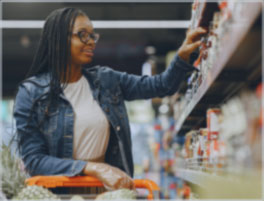A recent article in the Wall Street Journal (Grocers wrest control of shelf space from struggling food giants) flagged an emerging trend among retailers that is potentially threatening the often favorable shelf positions of large brand-name manufacturers in retail. For decades, grocers have relied on partnerships with manufacturers to inform their category planogram, their assortment, their merchandising and promotional strategies. This includes leveraging the research that manufacturers do to make these decisions. But more and more retailers are beginning to rely on their own research to decide if, where and how many products to shelve. They’re developing their own visions on category growth and product placement, and the shift is often resulting in less space for traditional supermarket big brand staples. Does that mean manufacturers will be completely cut out of retailers’ decision making? Not at all! We recently worked with a big yogurt brand in the US when one of the largest supermarket chains in the country wanted to change their dairy aisle planogram. The chain wanted to feature only multipacks of most yogurt sub-categories, based on the thinking that multipack buyers spend more on yogurt than single pack buyers on a yearly basis. The yogurt brand team had concerns about this change in strategy. They wanted to offer the retailer a counter vision and planogram proposal: Instead of catering primarily to multi-pack buyers, the brand presented a strategy to grow the category among families with children and variety seekers. To help make the brand’s vision a reality, we conducted an online behavioral simulation study among 450 yogurt customers of this specific retailer. We built a replication of the entire dairy aisle using our 3D virtual store technology. This approach offers a highly immersive and realistic virtual shopping experience that gives insights about SKU-level engagement and purchase decisions based on simulated customer behavior. We built three shelf configurations and divided our representative group of 450 yogurt consumers equally over these scenarios: Interestingly, the study results projected a negative impact on category sales for both new planogram visions, with projected revenue decreases between 2% for one scenario and 9% for the other. Both proposed new planograms were actually likely to trigger negative perceptions of the variety of offerings, and increase shopping time relative to the current planogram. This would all add up to shopper discontent. In the end, the brand could take these insights back to the supermarket chain so they could formulate a new vision together. Manufacturers have the power to influence and even defend their shelf positions, and we’re seeing a lot of brands become better sparring partners for retailers by bringing their own research and insights to the table. The result is more informed, research-based decisions all around.Rethinking the retailer-manufacturer relationship
A brand’s own category vision
For more information, check out our shopper marketing solution.
Make room, grocers: More brands are taking control of their category








